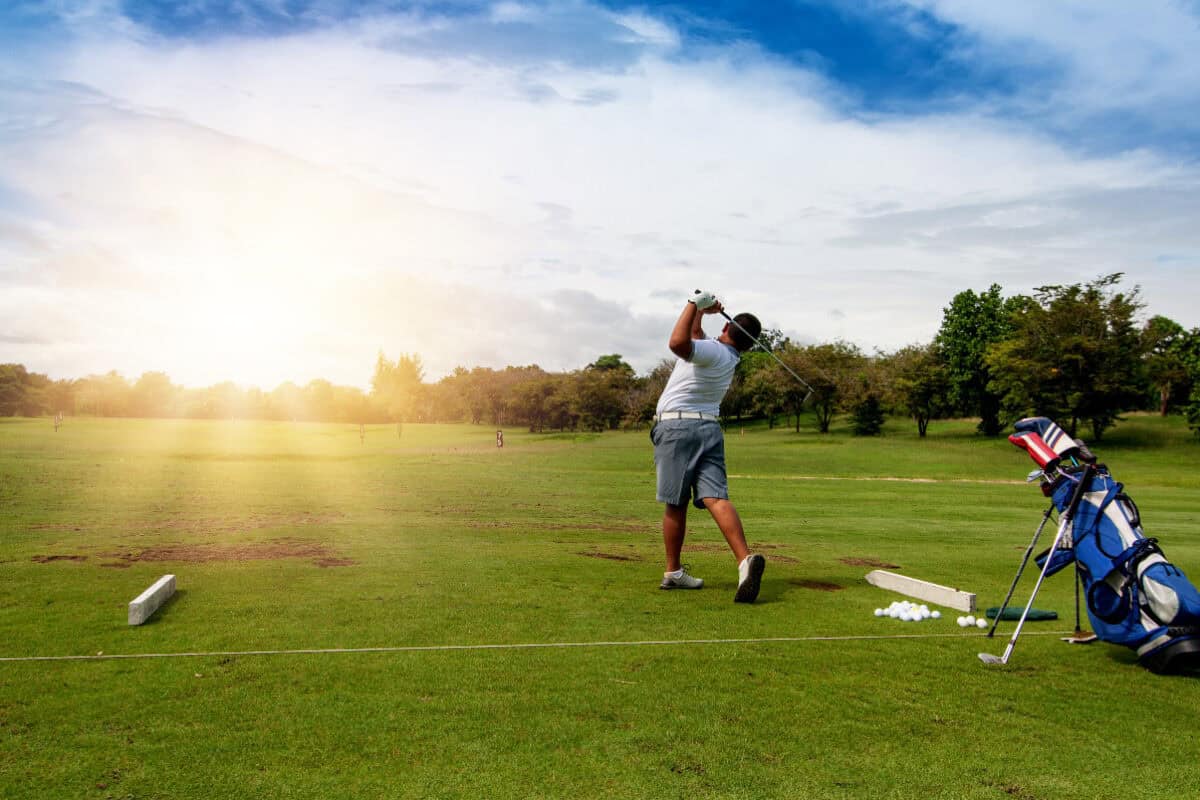How to Get a Golf Ball Tracer to Track Your Shots?
One of the coolest technologies transforming amateur golf in recent years is the emergence of ball-tracking apps and shot tracers.
Being able to see the exact path of each shot’s curve, apex, distance, and final landing spot provides invaluable insight into your game.
But with so many options now available, what is the best way for ordinary golfers to access this ball-tracing capability?
By understanding the tracer technology, integration with sensors, activation methods, and pricing, you can experience golf shot tracking just like the pros.

What is a Golf Ball Tracer?
A golf ball tracer is a software application that depicts the full flight of your golf shots in cool graphic renderings. It shows the exact shape, trajectory, apex, distance, and final position of every shot.
Tracers gather data from sensors and then illustrate the ball’s flight in videos, images, and interactive 3D animations.
Key attributes of tracers:
- Display complete shot arcs from all clubs in your bag – drives, irons, wedges, pitches, chips, etc.
- Measure precise carry distance, total distance, offline yardage, apex height, and other key stats.
- Generate awesome visuals replicating TV tracer graphics to study your shot shapes.
- Store, review, and compare shot data from round to round.
This brings professional tournament tracer technology to everyday golfers.
What Makes Ball Tracers Possible?
Advanced ball tracers rely on three underlying technologies:
- Lightweight sensors mounted to clubs or built into grips to capture swing data.
- Shot detection algorithms that analyze sensor measurements to determine shot outcomes.
- 3D graphics engines to render photorealistic ball flight animations.
Affordable miniaturized sensors, AI simulation, and modeling software enable tracer rendering.
Golf Sensors Required for Ball Tracking
To enable tracing, golf ball flight data must be captured from sensors:
- Club sensors attach to the shaft between the grip and clubhead to directly measure swing mechanics.
- Grip sensors integrate into club grips to collect motion, transition, and tempo data.
- Some grips have built-in sensors, or use add-ons like Arccos Caddie Smart Sensors.
Sensors connect to phones via Bluetooth to convey swing metrics to the app. Advanced algorithms then simulate the likely ball flight.
How Sensors Know Your Shot Results
But how does the system calculate actual distances and curves? Advanced modeling determines shot outcomes based on inputs:
- Club type and loft at impact.
- Swing path, angle of attack, speed.
- Point of impact on the face.
- Launch angle, spin rate, and direction.
Powerful AI predicts the ball flight by applying physics equations to these shot inputs provided by the sensors.
Activating Tracers During Play
With integrated sensors, activating tracing depends on the platform:
- Auto-detect clubs – Grips like Arccos Caddie automatically detect club type and loft on swings.
- Club tagging – You tag the specific club in the app for club-based platforms.
- Club selection – Choose the club about to be used from a list in the app before each shot.
- Shot recording – Trigger sensor data capture during the swing via a button press or motion.
- Bluetooth connectivity – Ensure clubs link properly at the start of each round.
Following proper activation protocols ensures shots are tracked accurately.

How Tracers Show the Ball Flight
With shot data captured, graphic renderings depict the ball flight:
- Uses launch angle, speed, spin, and other shot inputs to mathematically model the full trajectory.
- Animates the shot curve shape, peak height, roll-out, and total distance covered.
- Maps the exact landing spot relative to the hole location and boundaries.
- Displays all shot arcs together on an overhead course view.
- Option to view the course flyover view in AR through your phone camera.
Advanced graphics leverage sensor data to illustrate shot outcomes.
Tracer Capabilities by Platform
Shot tracing functionality depends on the system:
- Arccos Caddie provides full tracer graphics and animations. In-depth shot analysis tools.
- TaylorMade MyRoundPro creates tracer animations and aggregates rounds into stats.
- Garmin Approach CT10 displays tracer views right on the device screen when paired with club sensors.
- Bushnell Launch Pro builds tracer animations for each shot within its app.
- Ernest Sports Eagle allows shot comparison and mapping using tracer capabilities.
Study options to understand specific feature sets and visualization styles.
Golf Ball Tracers for Practice vs. Play
Some key differences exist between using tracers at the range vs. on the course:
At the Range
- Limited usefulness without actual targets and distances.
- Can’t calculate true carry without defined landing areas.
- The focus is more on gathering swing stats than shot results.
- Good for dialing in feel and observing general ball flights.
On the Course
- Maps shots to actual holes, hazards, and targets.
- Provides true carry, curve, dispersion, and distance data shot to shot.
- Translates practice mechanics into tangible on-course improvement.
- Shows true playing tendencies beyond pure technique reps.
Course use unlocks the full value of tracers for lowering scores.
Benefits of Using Tracers
Key advantages gained from tracing every shot:
- Discover true carry distance and gaps with each club.
- Measure the effects of weather, altitude, and temperature on distances.
- Audit exactly which holes and clubs cost you strokes.
- Learn proper club selection as conditions change.
- Analyze shot patterns to improve clubface control and swing path.
- Provides instant feedback connecting practice improvements to course performance.
The awareness and insights tracers enable accelerated skill progression.
Tracer Limitations and Considerations
While powerful, tracing technology has some inherent limitations currently:
- Requires the use of sensors attached to every club constantly.
- Computational accuracy depends on the correct club, loft, and shot information.
- Can’t automatically detect all shots like off-the-tee, penalties, putts.
- Small clipping errors may occur on exceptionally long drives.
- Animations are not pixel-perfect due to inherent complexity.
But overall, tracers capture over 90% of shots with impressive precision.
Golf Ball Tracer Pricing
Pricing to access tracing capabilities spans:
- Sensors as add-ons: $100 to $200 (one time)
- Clubs with embedded sensors: $400+ (part of club cost)
- Subscription apps + sensors: $100 to $200 annually
- Standalone launch monitors: $500 to $2500 (one time)
- Smartwatch apps: $free to $10/month
- Basic swing apps: $free or ad-supported
Evaluate your budget against desired features to get the right fit.
Conclusion
Thanks to integrated sensors and modeling algorithms, golf ball tracers that depict every shot’s flight are now accessible to ordinary players.
The awareness of true carry distances shot arcs, and patterns they provide delivers a fun, interactive way to improve your golf game.
While some limitations exist, tracer accuracy continues to improve across platforms. Take your game into the 21st century by experiencing professional tracer graphics on your own shots through technology options that fit your budget.
Soon you’ll gain the insights to shave strokes and make every drive, iron, and wedge just that much better.